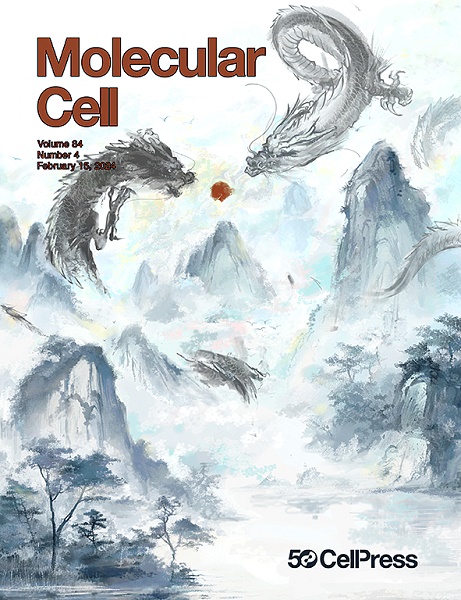A nuclear RNA degradation code is recognized by PAXT for eukaryotic transcriptome surveillance
IF 14.5
1区 生物学
Q1 BIOCHEMISTRY & MOLECULAR BIOLOGY
引用次数: 0
Abstract
The RNA exosome plays critical roles in eukaryotic RNA degradation, but how it specifically recognizes its targets remains unclear. The poly(A) tail exosome targeting (PAXT) connection is a nuclear adaptor that recruits the exosome to polyadenylated RNAs, especially transcripts polyadenylated at intronic poly(A) sites. Here, we show that PAXT-mediated RNA degradation is induced by the combination of a 5′ splice site (ss) and a poly(A) junction (PAJ) but not by either sequence alone. These sequences are bound by U1 small nuclear ribonucleoprotein particle (snRNP) and cleavage/polyadenylation factors, which, in turn, cooperatively recruit PAXT. As the 5′ ss-PAJ combination is typically absent on correctly processed RNAs, it functions as a “nuclear RNA degradation code” (NRDC). Importantly, disease-associated single nucleotide polymorphisms that create novel 5′ ss in 3′ untranslated regions can induce aberrant mRNA degradation via the NRDC mechanism. Together, our study identified the first NRDC, revealed its recognition mechanism, and characterized its role in human diseases.

求助全文
约1分钟内获得全文
求助全文
来源期刊

Molecular Cell
生物-生化与分子生物学
CiteScore
26.00
自引率
3.80%
发文量
389
审稿时长
1 months
期刊介绍:
Molecular Cell is a companion to Cell, the leading journal of biology and the highest-impact journal in the world. Launched in December 1997 and published monthly. Molecular Cell is dedicated to publishing cutting-edge research in molecular biology, focusing on fundamental cellular processes. The journal encompasses a wide range of topics, including DNA replication, recombination, and repair; Chromatin biology and genome organization; Transcription; RNA processing and decay; Non-coding RNA function; Translation; Protein folding, modification, and quality control; Signal transduction pathways; Cell cycle and checkpoints; Cell death; Autophagy; Metabolism.
 求助内容:
求助内容: 应助结果提醒方式:
应助结果提醒方式:


